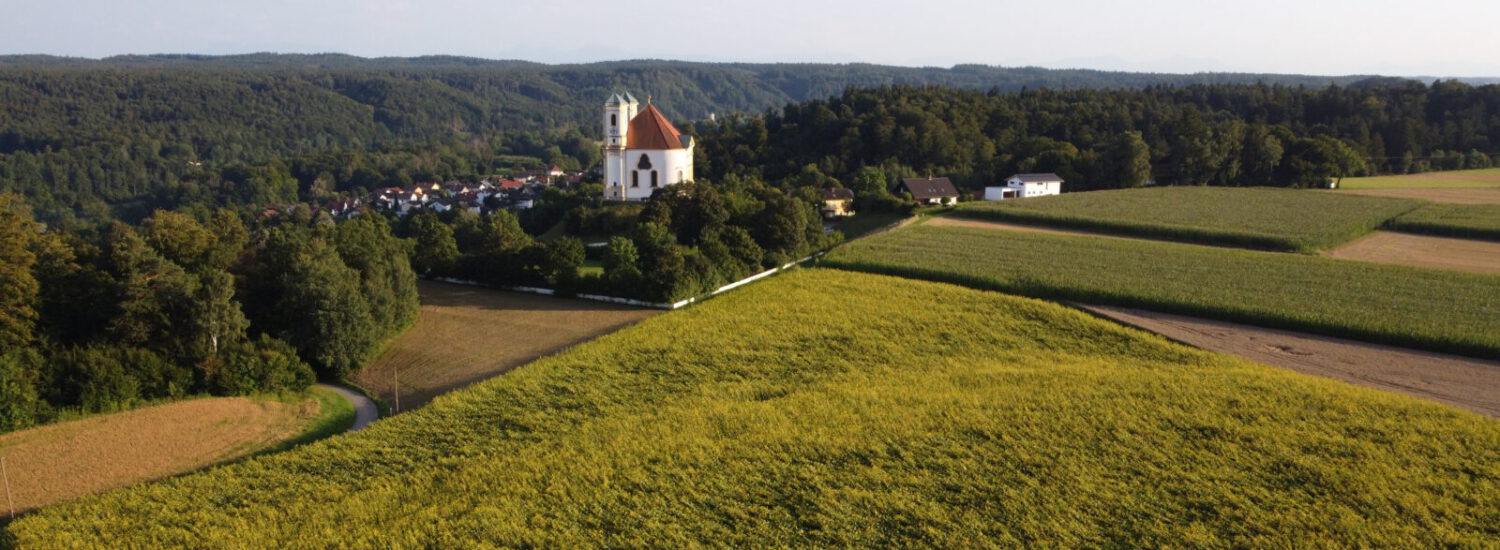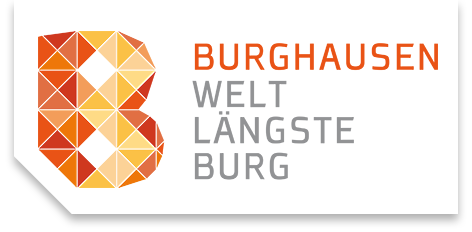
The hamlet of Marienberg is located about three kilometers southwest of Burghausen city center on a high plateau above the Salzach river. In 1978, Marienberg was incorporated into Burghausen as part of the Raitenhaslach municipality.
The "Pearl of the Salzach Valley" can be found in Marienberg: the pilgrimage church Maria Queen of the Rosary with its two magnificent towers. The church was first mentioned in 1143. In the years 1760 to 1764 it was rebuilt by the Trostberg court mason, Franz Alois Mayr. The church is considered one of the most beautiful rococo churches in Bavaria.
In 1143 the Cistercian order moved its monastery from Schützing an der Alz to Raitenhaslach. At this point in time, a Capella zu Marienberg was first mentioned in a document. In 1203 the parish rights passed to the Marienberg church. Over the centuries, the importance of the church grew more and more: in 1595, the influx of pilgrims was so great that the church was expanded five years later.
The Marienberg Church was continuously rebuilt, expanded and rebuilt in 1760. Abbot Emmanuel II commissioned Mayr in addition to the court mason Mayr (1723-1771) and the Munich painter Martin Heigl, who decorated the church with magnificent frescoes, which mainly had Maria as their theme.
On May 1, 1765, Prince-Archbishop Sigismund of Salzburg consecrated the church. If you want to get inside the church, you have to climb a staircase with 50 steps. Each step represents a rosary movement.
41 years later the Marienberg church was closed. The Marienberg farmers were able to prevent their planned demolition thanks to their fierce resistance. They even accepted corporal punishment and arrest in the Salzburg penal house in order to save their church.
In 1811 the Marienberg church was finally reopened.
Thanks to its exposed location, the Marienberg church is clearly visible from afar. The central building of the church is almost 25 meters long, 23 meters wide and over 21 meters high. The floor plan is a Greek cross. A flat copper tent roof covers the church's two magnificent towers. The ascent to the church takes place in five paragraphs, each with ten steps and is modeled on the rosary prayer.
The ceilings are decorated with paintings by Johann Martin Heigl, a student of Johann Baptist Zimmermann. The altars of the church come from the sculptors Johann Georg Lindt and Johann Georg Kapfer. The two pulpits were made by Johann Nepomuk Hofer. The organ was built by Anton Bayr in 1769. The queen of instruments has been restored time and again, most recently in 2010.
Two bells, made around 1776 and 1783, come from the original ringing. They weigh 600 and 200 kilograms. The two bells that were melted down during World War II were replaced in 1954. They complete the ringing and weigh 1130 and 212 kilograms respectively.
Contact
If you are interested in a visit or a pilgrimage or want to attend a service in the Marienberg pilgrimage church, you can get all the important information from the Burghausen parish association.
Burghausen Parish Association
Knife line 17/18
84489 Burghausen
T. + 49 8677 4586
Marienberg Church | Burghausen Parish Association (bistum-passau.de)
pfarrverband.burghausen@bistum-passau.de

